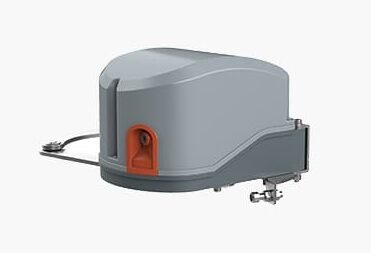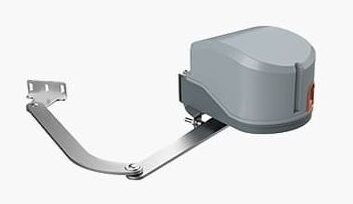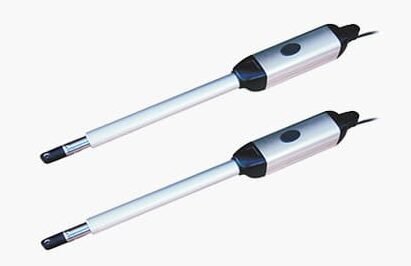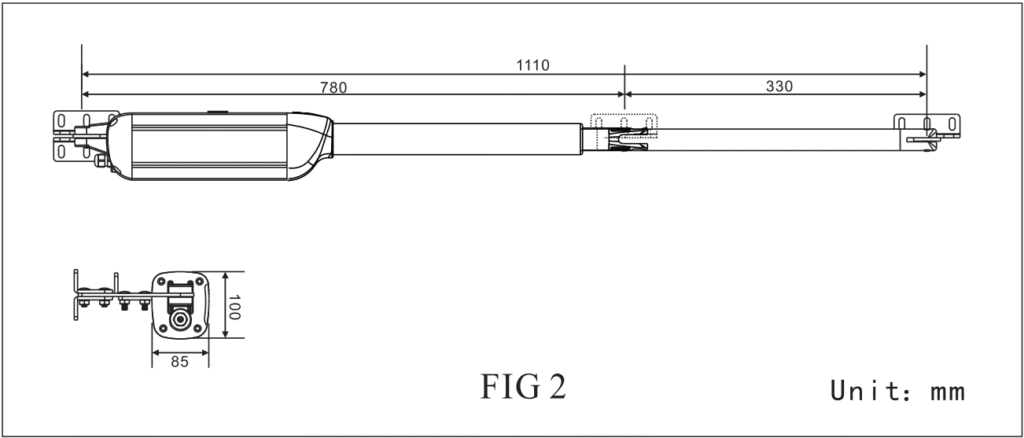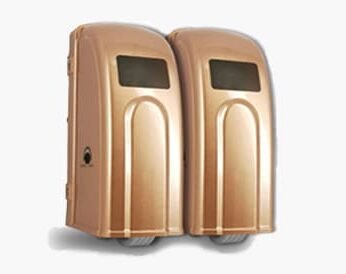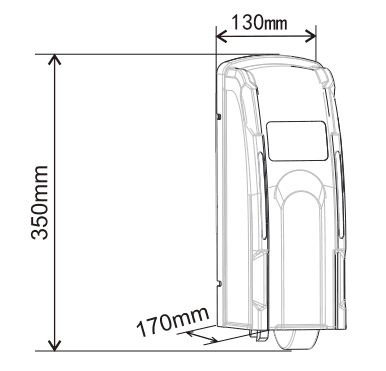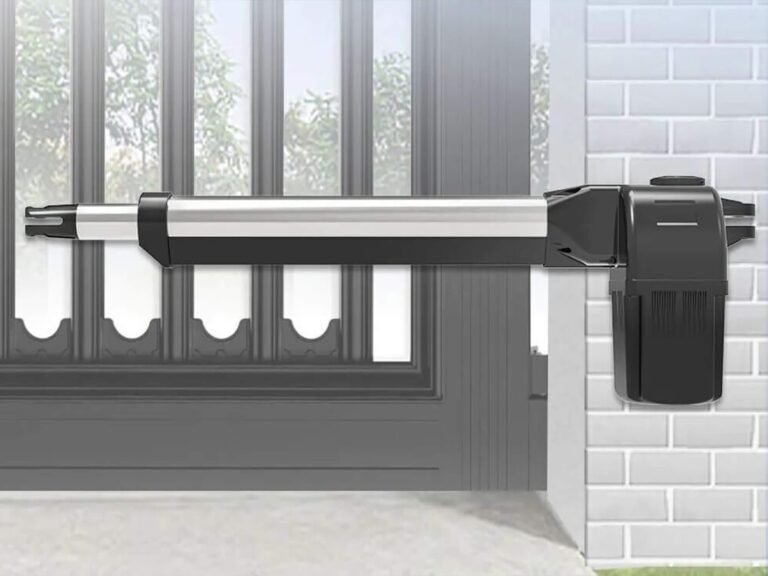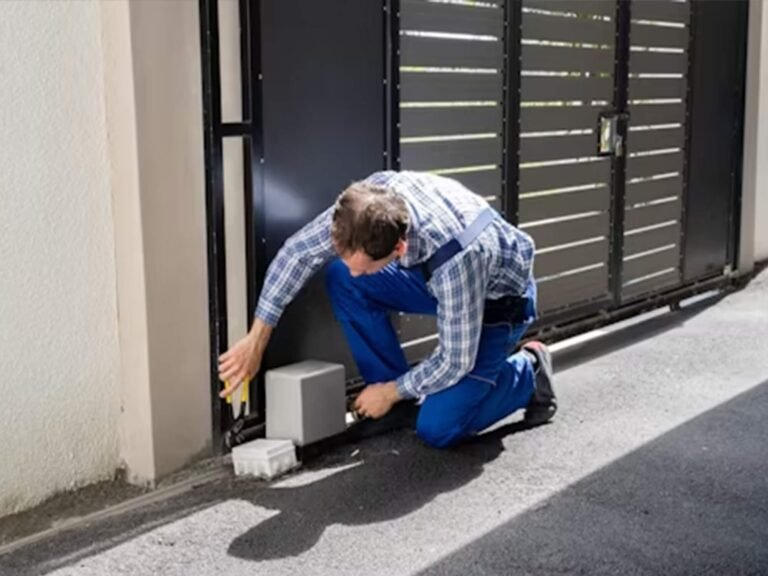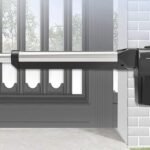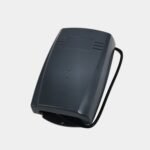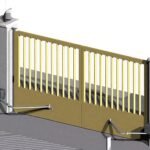Swing gate openers play a crucial role in automating swing-gate operations. When you pick the right swing gate opener, you mainly need to consider three types. These types are classified based on their driving and installation features: crank-arm type, push-rod type, and roller type. Each type has unique pros and cons, so let’s analyze them in detail to help you make an informed choice.
1. Crank-Arm Swing Gate Openers
This opener uses a crank-arm structure. Specifically, you mount the motor on the door frame or gate post side. One end of the crank arm connects to the motor, and the other end connects to the gate leaf. The gate moves relying on the crank arm’s expansion, contraction, or rotation.
Advantages
Installation Flexibility: It works well for uneven ground, steps, or surfaces not friendly to grooving (like stone or tiled floors). Additionally, it is compatible with various gate materials, including wood, metal, and glass.
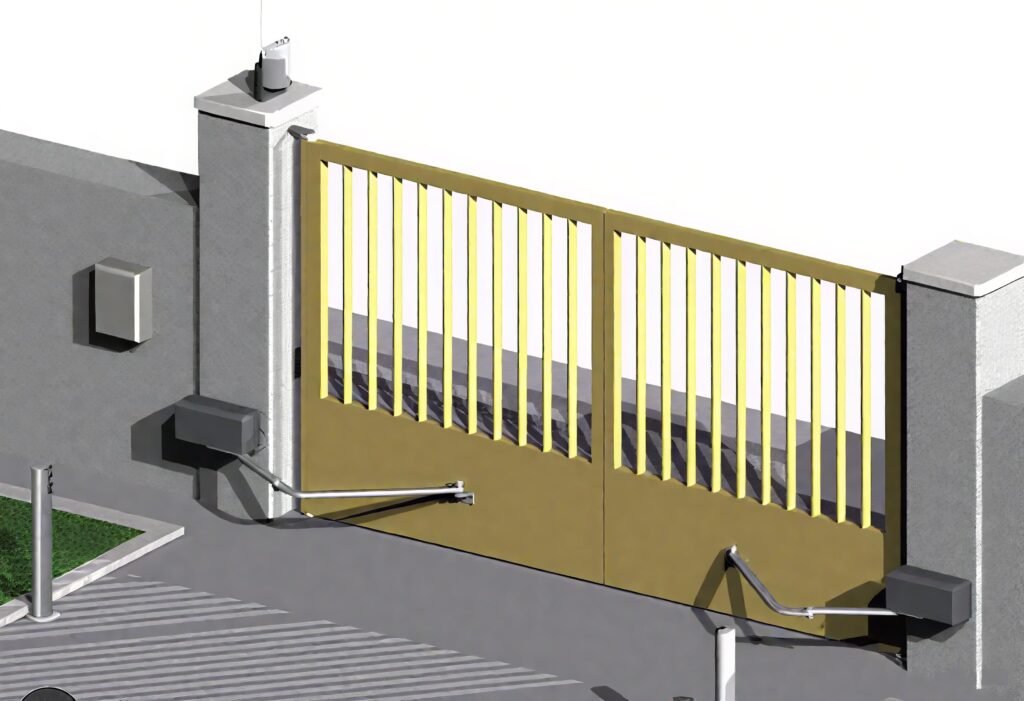
Smooth Operation: It distributes force evenly, ensuring stable opening and closing even for large or heavy gates. This design reduces shaking or jamming. Moreover, the anti-pinch rebound function enhances safety in high-traffic areas.
Aesthetic Appeal: The side-mounted motor and crank arm are not obtrusive, so they preserve the gate’s original appearance.
Disadvantages
Precise Installation Needed: You must adjust the connection angle accurately. If not, the gate may deform or jam. Also, it requires enough space for side mounting.
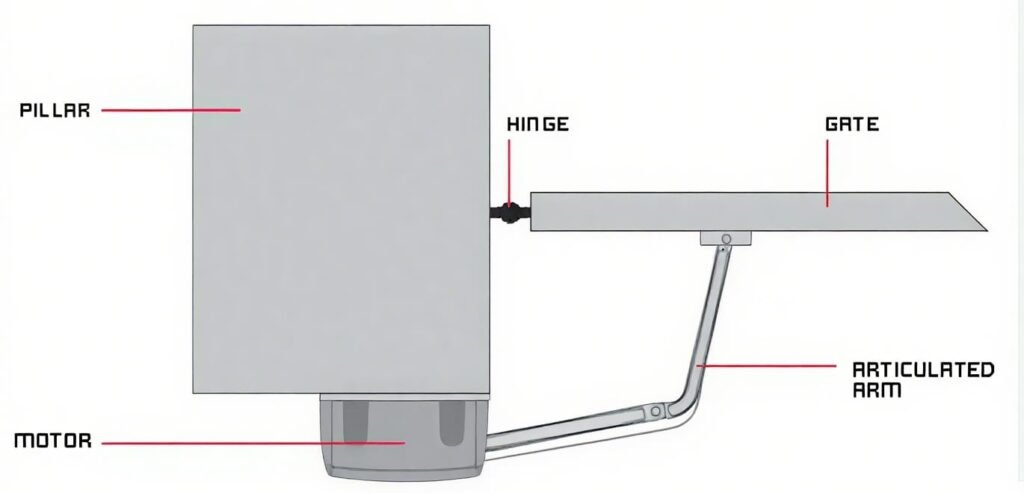
Higher Upkeep Costs: It has multiple moving joints and connectors, which demand regular lubrication and inspection. Furthermore, replacing worn parts is costly, adding to long-term expenses.
Low-Temp Sensitivity: In cold regions, joint lubricants may solidify. This solidification hampers the opener’s performance, so you need to take extra anti-freezing measures.
2. Push-Rod Swing Gate Openers
This opener drives the gate leaf through the expansion and contraction of a motor-powered push rod. Typically, you install the motor on the gate frame or above the gate leaf. The push rod connects to the gate leaf via a bracket.
Running Video
Advantages
Easy Setup: It has a simple structure and flexible push-rod connection. This makes it great for quick installations or renovations, ideal for hassle-free setups.
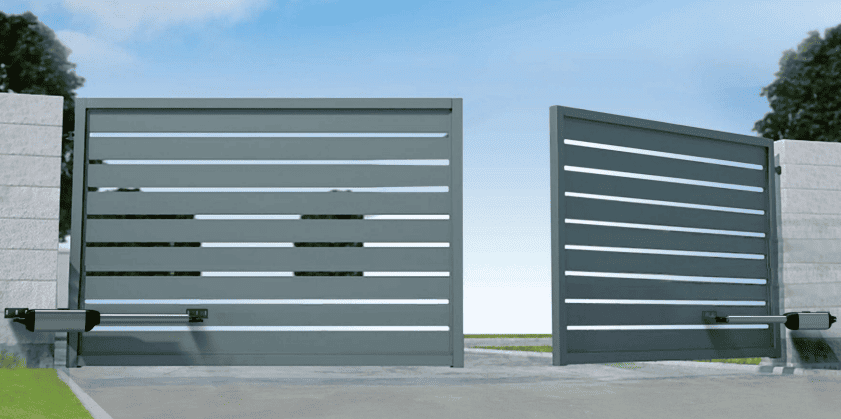
Wide Compatibility: It applies to the maximum number of installation scenarios. It suits inward or outward-opening gates and various materials like wood, aluminum alloy, and iron. Particularly, it works well for small-to-medium-sized residential or light commercial gates.
Low Maintenance: It has fewer moving parts. As a result, main wear items (push rod, motor gears) have long service cycles and low replacement costs, reducing your upkeep efforts.
Disadvantages
Limited Thrust: It is not suitable for ultra-heavy gates or high-frequency use (e.g., mall gates). Because the motor may overheat under such conditions.
Aesthetic Impact: The exposed push rod and bracket affect the gate’s appearance. This is a drawback for setups where aesthetics are a top priority.
Restricted Opening Angle: A notable flaw is that it limits the gate’s maximum opening angle. Usually, the angle only goes up to 105 degrees, which may not meet the needs of scenarios requiring a larger opening range.
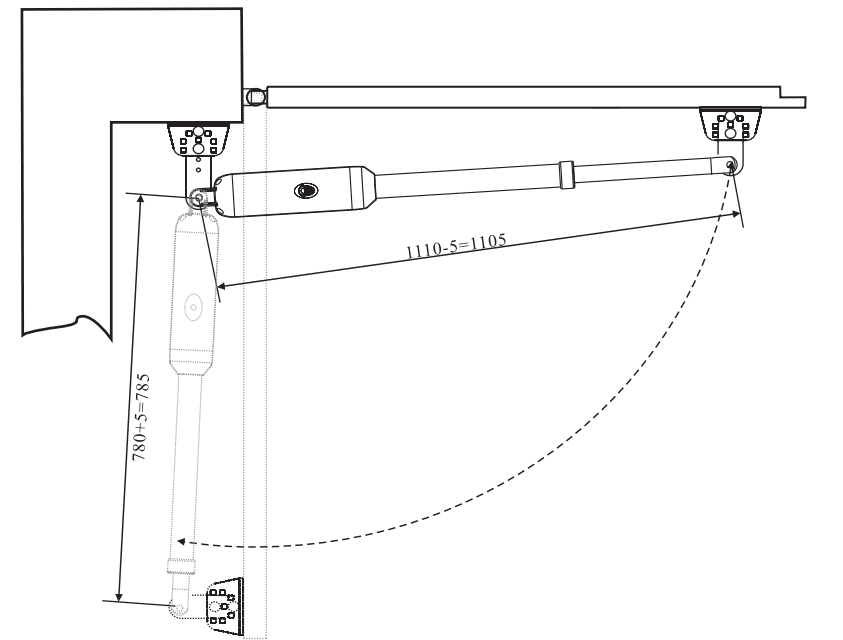
3. Roller-Type Swing Gate Openers
This opener has its motor and driving roller installed at the bottom of the gate leaf. It operates using friction between the roller and the ground. Many people like it because of its attractive design and high cost performance.
Advantages
Anti-sag & Easy Installation: Long-term use won’t cause the gate leaf to loosen or sag, effectively preventing sagging issues. Also, it is not affected by gate posts or original structures. This allows you to easily install it on various swing gates, such as courtyard gates, wrought iron gates, garage doors, and copper doors.
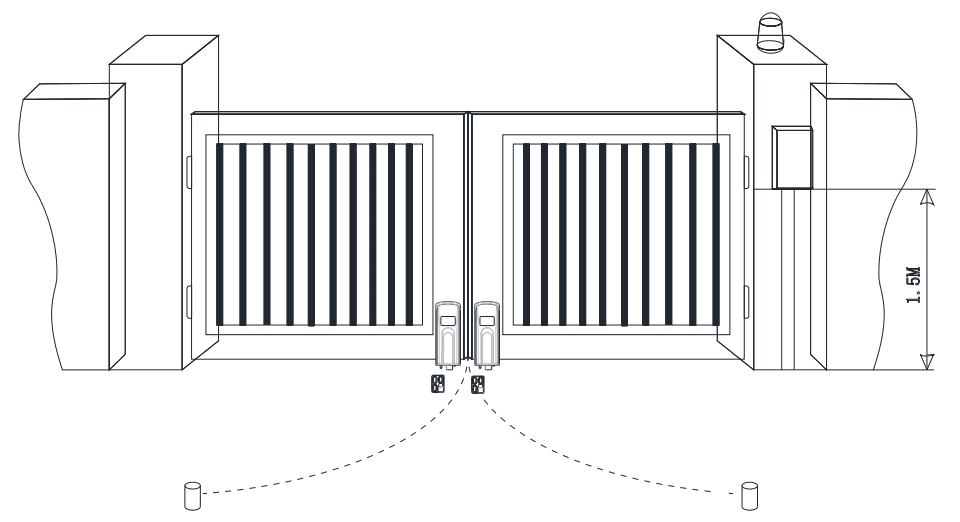
Built-in Locking Function: After you close the gate, the opener can lock itself automatically. You don’t need an additional electric lock.
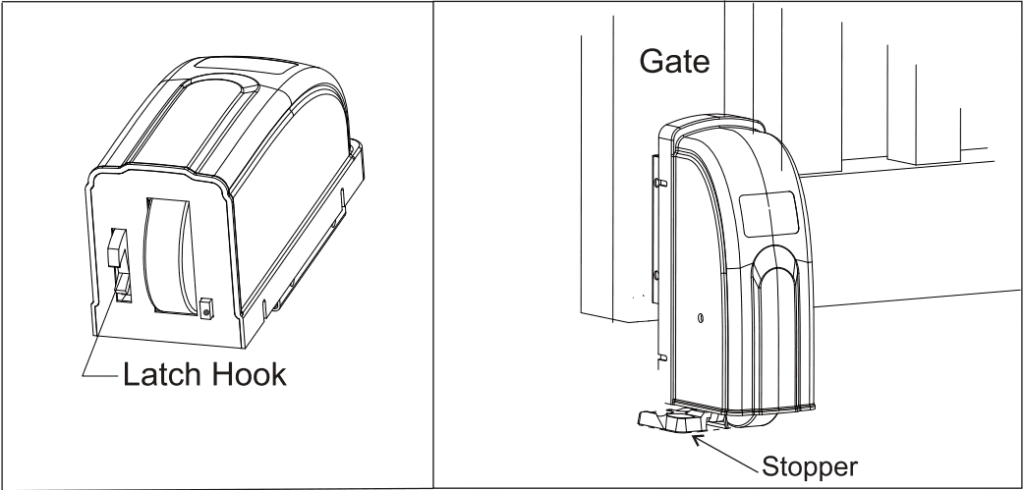
Wide Opening Angle: It can achieve an ultra-wide opening and closing angle of 0 to 180 degrees. This range meets various usage needs.
Running Video
Disadvantages
Installation Requirements: The ground must be flat and stable to ensure the roller runs smoothly. Additionally, the ground should not be overly smooth. Because overly smooth surfaces fail to provide sufficient friction for proper operation.
Environmental Vulnerability: Exposed components can accumulate dust and debris or get damaged by rain. You need to clean them regularly to prevent roller slippage or motor damage.
Maintenance Aspects: Checking and servicing the bottom-mounted components requires care. If any issues occur, you may need to get close to the gate bottom, which can be slightly cumbersome.
Final Considerations On Choosing Swing Gate Openers
When you choose a swing gate opener, follow these key steps:
- First, assess the gate specs. Make sure the opener’s capacity matches the gate’s size and weight.
- Second, consider usage frequency. If you use the gate frequently, opt for a durable, high-thrust model.
- Third, factor in the installation environment. This includes indoor/outdoor settings, ground conditions, and weather elements like wind and temperature.
- Fourth, determine your aesthetic priorities. Decide how much the gate’s appearance matters to you, then choose accordingly.
- Fifth, evaluate your maintenance willingness. Be clear about whether you can handle the required upkeep tasks and costs.
By balancing these factors with each opener type’s pros and cons, you will find the best fit for your needs.

